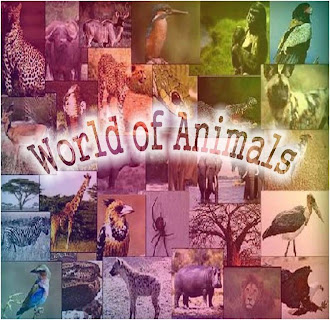World of Deers
/ 7:10 ص /
Deer
Of animals active at dawn and sunset, and some of them live in the quiet mountain valleys, and the other in the desert sand. Living on the little plants such as grasses, herbs and shrubs, and in times of drought feed on dry desert shrubs. And fall under the deer species of antelope, antelope tribe.
Habitait
The Arabian Peninsula in the mid-mountain valleys, arid and desert areas, valleys, gravel. There are also species living in Palestine, Jordan, Syria, Lebanon, Iraq and North East Africa
Lifespan
Ghazal live between 10-15 years old, live in the lives of families and within the reserves most of his life in nature, which exposed to many risks and enemies.
Newborn small and can run after hours of drying the body, and is associated with his mother during the first period of breastfeeding, and learn a lot of small properties sex mother and young remain in a safe place.
During the first two weeks after birth, a little movement, and rise only when you see his mother and clings to the body when his mother initiate breastfeeding them.
After eight weeks into small be able to live without mother's milk. And begin to form small groups of caressing and playing at sunset.
And after the activity and play converge in pursuit of young mothers, and end stage of prosecution of young mothers to join the female herd, where young people participate in daily activities and to move with the herd.
And to familiarize young adults during the follow-up on how to avoid risks and to adapt to the environment. Upon completion of the growth of young females remain with the herd while males left him to join a single group.
Food and drinking water
Eat green herbs, and plants dry, short, leaves, buds, and loves to drink water in large quantities, although it is drought-tolerant, long-term bear the thirst.
Food deer in captivity
Feeds on alfalfa, dried and concentrated diets, in addition to the presence of mineral salts (and provide sources of drinking in different parts of protected areas or pens).
Diseases and injuries that may affect deer and methods of prevention and Alhlaj including:j
First: superficial wounds (as a result of a fight between the dominant males and other males)n
Second: by infected ticks and in captivity is very rare and simple
Third: contagious abortion
IV: pneumonia contagious in cattle.
V.: Tuberculosis false
VI: rinderpest
Seventh: the plague of sheep
Eighth: Foot and Mouth Disease
And must take necessary precautions, and that removal full Ghazal patient, and recommended a vaccination for Ghazal against the majority of bacterial and viral diseases. Must also be a regular checking of the Gazelle, and especially manure, to find out the incidence of certain parasites and provide appropriate treatment for each case.
Deer species endemic to the Arabian Peninsula
Al Reem (Gazelle sand)h
Ghazal human (Arabic)b
Ghazal Afri Yemen (in the mountains of Yemen)n
Reem (sand gazelle )k
Is the largest species of deer in the Arab region. Bakriaat belongs to the family, is characterized by pale, turquoise, sand is larger than the Afri-Ghazal, Arabian gazelle. Rising up the body at shoulder level 60-70 cm, and weight 30-40 kg, and total body length of 95-120 cm, ear length 11-13 cm and the length of antlers 20-30 cm and has a lyrical form. Centuries of female short, high 10 cm in length, lists, and abdomen white, and the lines on the face and groins are not clear. It is more tolerant to the atmosphere warm and human Afri-Ghazal.
Human-Ghazal (Arabic)2
We find it more agile, with eyes wide with rings, rising up the body at shoulder level 16 cm and weight 25-30 kg, and the color red was built on the upper parts of the body and the presence of clear signs on the face, bar and dark color on the groins, and on the move, jumping from place to another, clearly shows this tape. It also has a black tail and the male is more beautiful than the female. The male has a curved back centuries and of the lyrical form, ranging in length from 15-20 cm. Has a human female deer (Arabic) centuries short of length 5 cm, and uses the male centuries acute violent fights between rival males, and then to impose its sovereignty over a flock of females and the expulsion of the rest of the male away from his district in which they live.
Ghazal Afri
We find that the three smaller species, it is smaller in body size, and rising up the body at shoulder level, about 55 cm, and weigh between 20-23 kilograms, light color, there does not Khasrtih brown tape that characterizes the Arabian gazelle. The centuries-mentioned Afri longer centuries Arabian gazelle, and a length of about 25-30 cm straight shape, unlike the centuries when the Arabian gazelle harp
Afri live deer in western and northern regions of the Kingdom of Saudi Arabia, Qatar and Kuwait, and Oman.




